Dominoes is such a fun game (and a good way to learn counting!), that we created beautiful Baltic birch wood double-6 travel dominoes.
There are so many domino games that of course it has its own website. The version that we learned is kind of a mash-up of All Fives and Sniff, a points game anyway. I've created the game rules as a handy-dandy printable PDF or read on down below:
-
-
- Gather your dominoes, players, and a pen and paper. Dominoes can be played with as many people as you like, but if it gets larger than 4, then you'll need a set of double-twelve dominoes. Walnut Studiolo's travel dominoes are double-six dominoes. Designate a scorekeeper and a game score (such as 100).
- Shuffle the dominoes by flipping them all upside down so no pips (dots) are showing and moving them around in circles until you're satisfied they're random.
- Each player draws their tiles face-down, and the number of tiles drawn depends on the number of people in the game:
- For 2 players, draw 7
- For 3 players, draw 6
- For 4 players, draw 5
- The remainder of the tiles are left in a pile to the side within reach, which is called "the boneyard".
- The object of the game is to make to make the open ends of the layout add up to 5 or a multiple of five (5, 10, 15, 20, etc.). The player who makes such a score receives that number of points.
- To score, you can keep score with plain old numbers, but it's much more fun (and authentic, since scoring is only done in multiples of fives) to do it pictorially, with each line representing 5 points and a circle representing 10. Like so:
-
 Graphic from davidvs.net
Graphic from davidvs.net
To Play:
- To begin play, the player with the highest double places that tile down. If no player has a double, each player draws an additional tile from the boneyard. Repeat until one player can start.
- That initial double tile is called the "spinner" and it is the only tile that can be played off all four edges (in four directions). At any time there may be 2, 3, or 4 open ends on the spinner.
- When the spinner has only been played off only one edge, usually just in the beginning of the game, all of the spinner's pips count toward the total.
- As play proceeds on at least 2 sides of the spinner, the totals are counted only on the pips on the ends of the tiles that are on the outer-most edges of the game.
- All subsequent doubles can only played in two directions like all the tiles except the spinner, but when played they are placed perpendicular to the line they are in and all of its pips are counted. For example, a double 3 played mid-way through game play would be counted as 6.
- Play proceeds to the left (clockwise). Each player adds a domino to an open end of the layout, if s/he can by placing a tile down so that touching ends match in number. If a player is unable to make a move, he must draw dominoes from the boneyard, until s/he can play. If there are no dominoes left, then the player must pass.
Play Examples:
A) If the first tile placed is a 5-5, then the player scores a 10. At this point all sides of the 5-5 are available for play.
B) If the second tile placed is a 5-0, then that player also scores a 10. At this point three sides of the 5-5 are available for play, as well as the blank.
C) If a third tile, the 3-5 is then played on the 5-5, the total is 3 (3 + 0), so that move scores no points. If the fourth, next move is a 0-2 played on the 0, then the total is 5 (3 + 2), so the player scores 5 points. The top and bottom of the initial 5-5 are still available for play, as is the 3 and 2.
 Graphic from chessandpoker.com
Graphic from chessandpoker.com
Winning:
o A hand ends either when a player plays all his tiles, or when a game is blocked (meaning no one can go). In either case, the player who has no tiles left, or the player with the "lightest" hand (least number of total pips) wins the total of his opponents points added together (minus any points in his/her own hand if it's a blocked game), rounded to the nearest 5, and divided by 5. For example, if the winning player has 3 points in his hand, and his three opponents have 5, 11, and 13, then the total difference is 26 (5 + 11 + 13 - 3). This is rounded down to 25 and divided by 5. Thus, 5 additional points are added to the winner's total. All players retain the points that they have attained during gameplay, but only the winner gets the bonus points at the end of a hand.
o A game is won when the first player reaches the agreed-upon total game score (such as 100).
Play dominoes on the go with your family using our creative, handcrafted travel-sized versions. Check out all our handcrafted travel games:




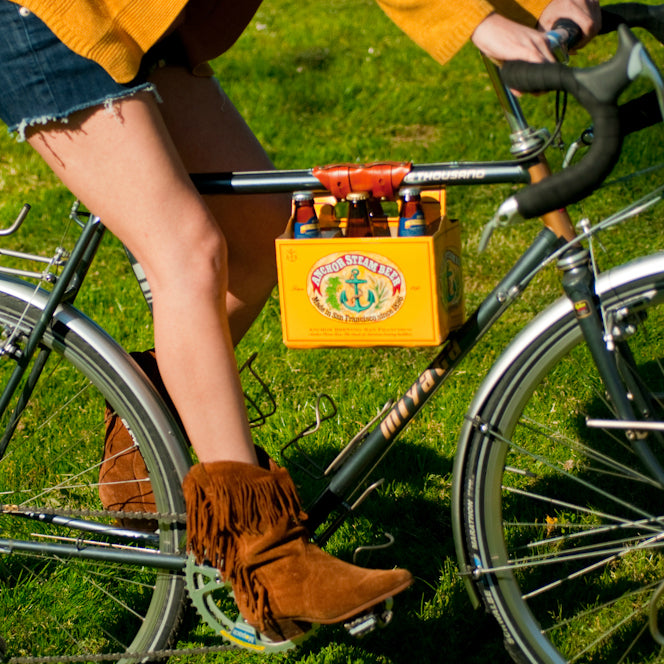

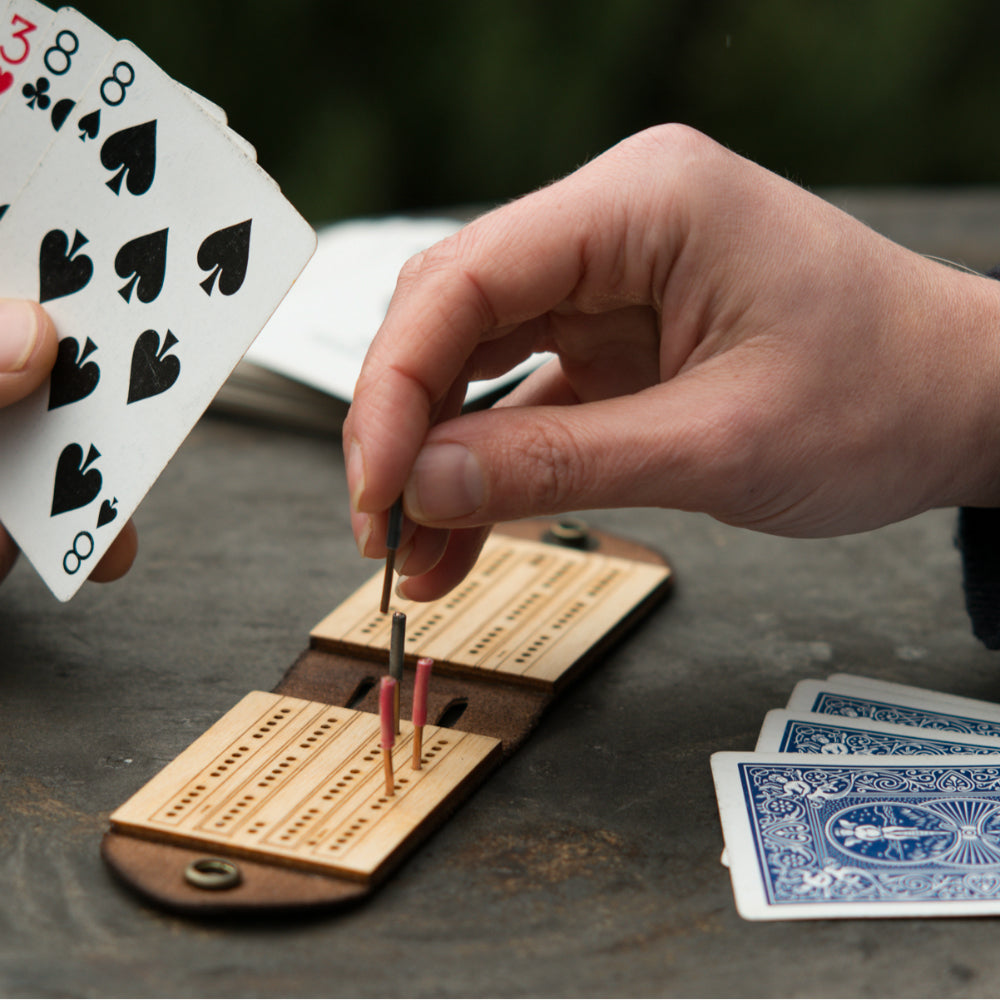
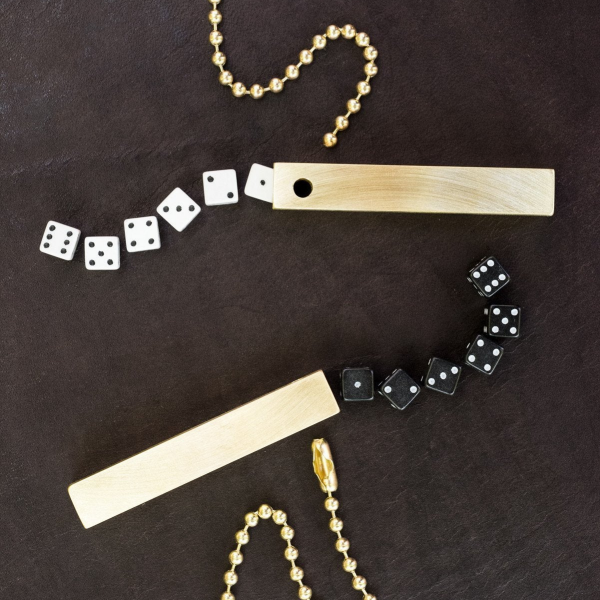
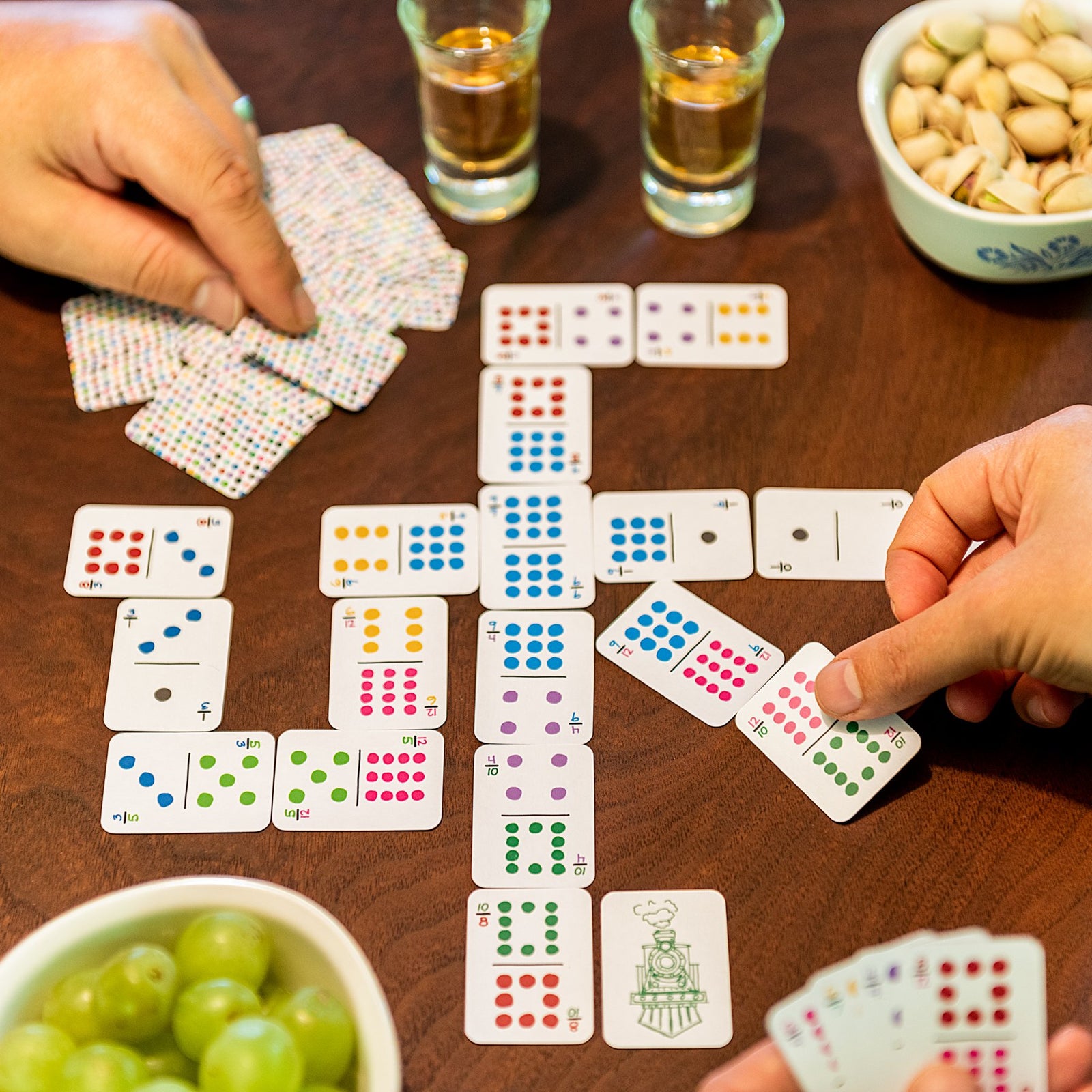
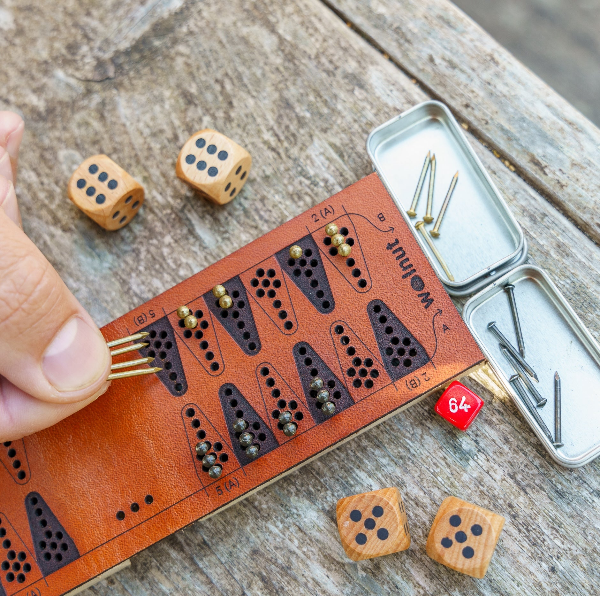


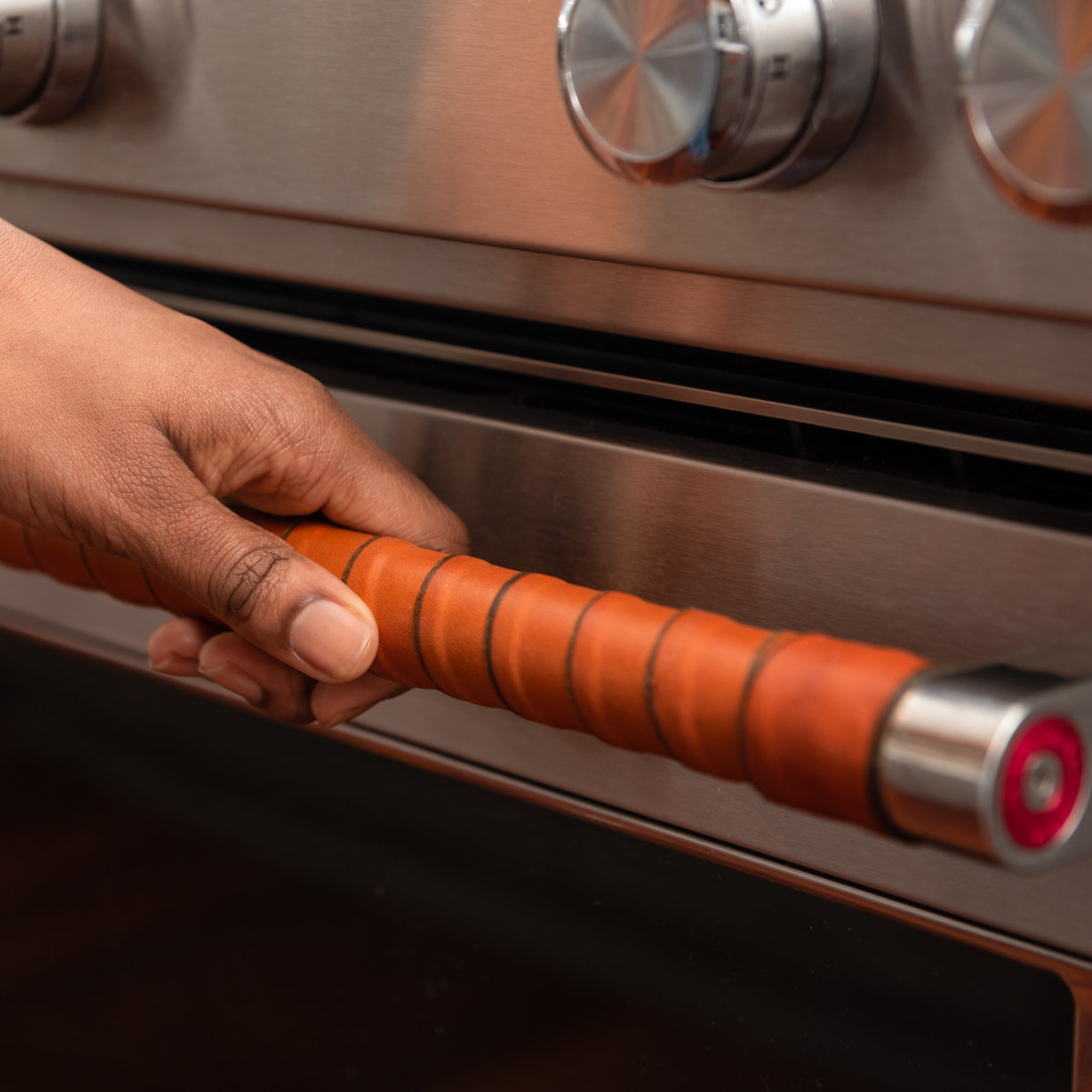






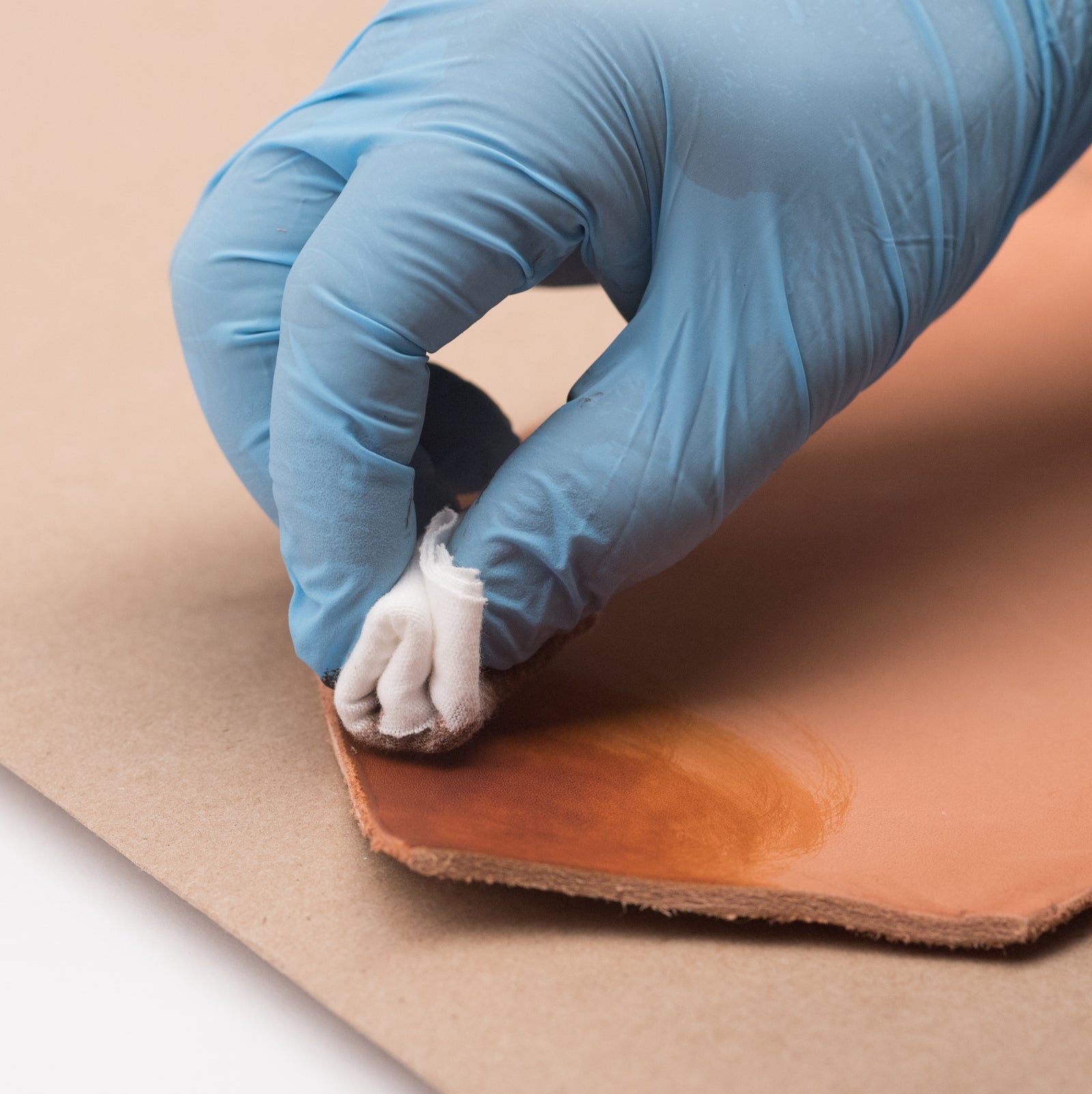

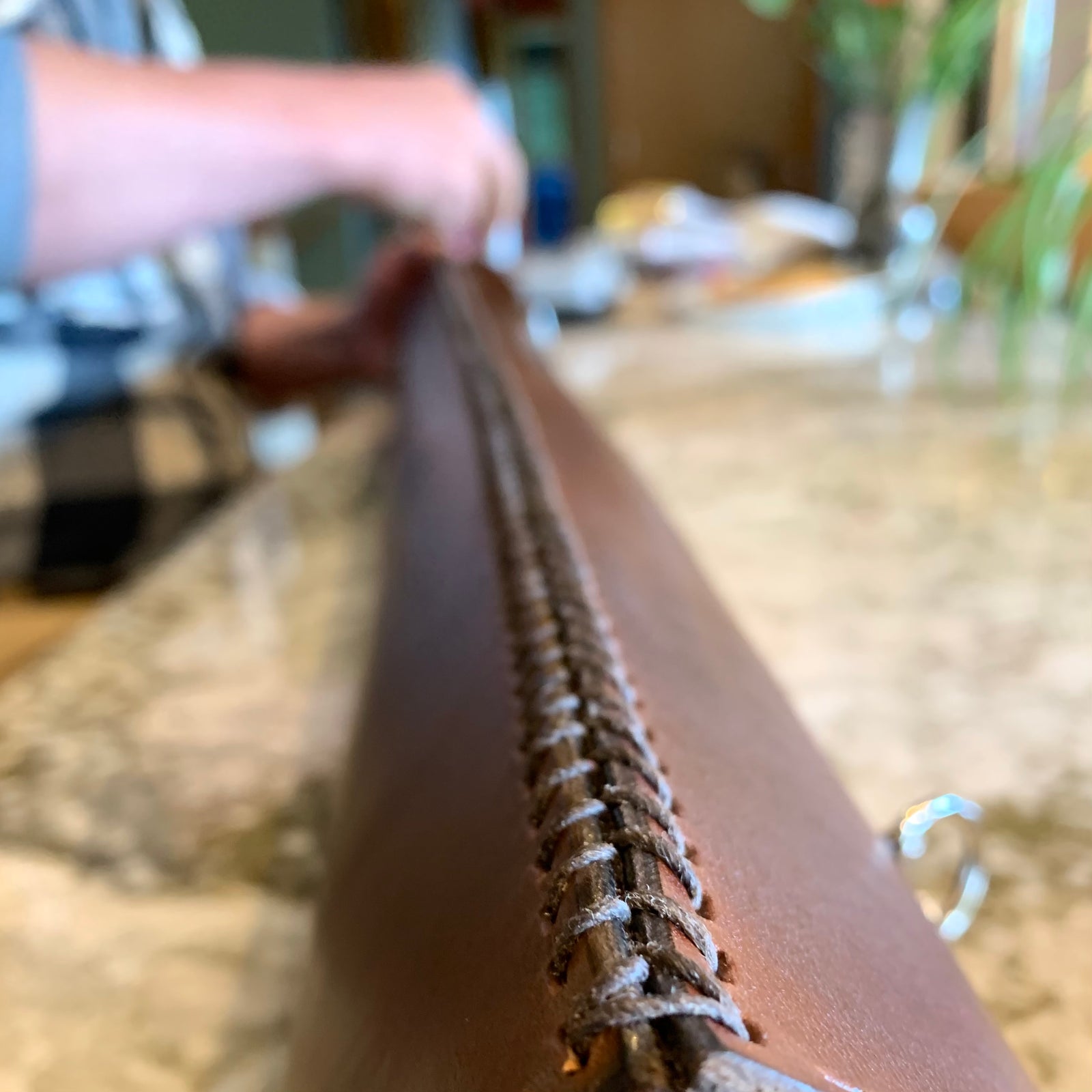






Walnut Studiolo
October 10, 2024
@Jim – In Picture #4 above, the score is 10. On the outside of the playing field there are three open ends with values of 2 + 3 + 5 = 10. Great question, thanks for asking!